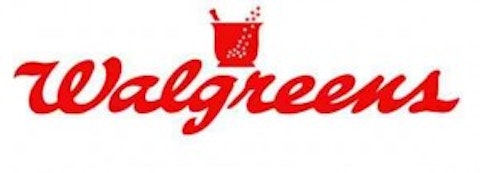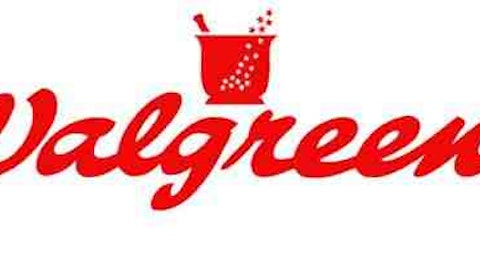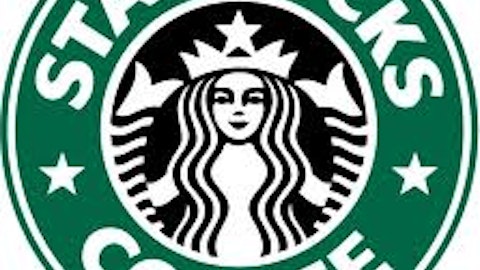
Healthcare sector sales are slowly rising
Based on the latest survey of the U.S Census Bureau, U.S retail sales rose by 0.6% during June compared to May and by 3.7% in the first six months of 2013. Moreover, the full report shows health and personal care stores’ sales rose slightly by 0.2% in June (month-over-month) and increased by 0.3% in the first half of 2013 compared to the first half of 2012. This means that healthcare retail sales are slowly rising and at a slower pace than total retail sales.
Walgreen Company (NYSE:WAG) has outperformed the retail-pharmacy market in terms of growth in revenue: The company’s revenue rose by 2.5% during June and in the first two quarters of 2013 its net sales increased by 1.5%. The company continues to expand its operations as it opened 207 drugstores during 2013 (up-to-date). If the company keeps outperforming the retail-pharmacy market, it may help to maintain its stock’s rally.
Rite Aid Corporation (NYSE:RAD) hasn’t done better than the market average, as its net sales fell by 6.4% in the past two quarters (year-over-year). Moreover, if the company’s revenue continues to fall at the current pace, Rite Aid won’t reach its annual outlook: The company projects its revenue will be between $24.9 and $25.3 billion – this represents a drop in net sales of between 0.4% and 1.9%.
CVS Caremark Corporation (NYSE:CVS) wasn’t able to augment its revenue: In the first quarter, its net sales inched down by 0.1%. Let’s turn to examine these companies’ profit margins and dividend payments.
Profitability and dividend
In terms of profit margins, Walgreen Company (NYSE:WAG), Rite Aid Corporation (NYSE:RAD) and CVS Caremark Corporation (NYSE:CVS) have improved their profitability: Walgreen Company (NYSE:WAG)’s profit margin slightly rose from 4.9% to 5.4% in the quarter ending in May; Rite Aid’s profitability reached 1.5% in the recent quarter compared to a loss in the same quarter in 2012. CVS was able to increase its profitability by 21% to a profit margin of 5.5%. CVS’ profit margin is higher than Rite Aid Corporation (NYSE:RAD)’s profitability and close to the profit margin of Walgreen Company (NYSE:WAG).
Further, CVS Caremark Corporation (NYSE:CVS) still projects its net earnings will grow by 22% to 25% in 2013 compared to 2012. Considering CVS’ current progress, the company is on its way to reach this goal. This growth rate is likely to be met not due to higher sales but due to improving profit margins. According to the company, this increase in profitability is due to influx of new generic drugs to its stores.
The rise in Walgreen’s profitability may have contributed to the board’s decision to raise the dividend payment to almost $0.32 cents per share – a 14.5% bump. This reflects an annual dividend yield of 2.5%. If the company’s profitability continues to rise, it is likely to lead to a higher dividend yield.
In comparison, CVS’ dividend yield is nearly 1.5%. Rite Aid doesn’t pay dividends and doesn’t seem to anticipate starting paying anytime soon. Based on the above, Walgreen Company (NYSE:WAG)’s rise in profitability and high dividend yield makes the company a bit more preferable to Rite Aid or CVS.
Valuation
Let’s turn to examine these companies’ enterprise value and their EV-to-EBIT ratio to compare their pricing.
The table below shows the summery of data of all three companies and the average for the pharmacy-services industry.

The yearly EBIT is based on the last four reported quarters. As seen, Although Rite Aid has a much lower P/E than Walgreen or CVS, the former has a much higher EV-to-EBIT ratio, which suggest Rite Aid’s pricing is relatively high. On the other hand, both Walgreen and CVS have a slightly higher EV-to-EBIT ratio than the market average has. This means, at face value, both companies aren’t too expensive.
Takeaway
The drugstore retail market doesn’t seem to progress as fast as the U.S retail market does. Nonetheless, leading pharmacy retailers such as Walgreen Company (NYSE:WAG) and CVS are still very reliable companies with stable growth in earnings, dividend payments and a strong hold on the drugstore-retail market. Therefore, even though these companies have some risks and weak points, they are still reasonably valued and might continue their upward trend in the stock market.
The article Will This Retail Drugstore Chain Continue to Heat Up? originally appeared on Fool.com and is written by Lior Cohen.
Lior Cohen has no position in any stocks mentioned. The Motley Fool has no position in any of the stocks mentioned. Lior is a member of The Motley Fool Blog Network — entries represent the personal opinion of the blogger and are not formally edited.
Copyright © 1995 – 2013 The Motley Fool, LLC. All rights reserved. The Motley Fool has a disclosure policy.


